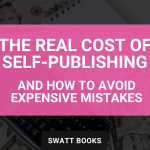Publishing a book isn’t just another item to tick off your to-do list. If you’re aiming for something truly impactful—something that positions you as an expert, grows your brand, and opens doors to new opportunities—then it’s time to let go of the idea that you can throw it together in a weekend and call it done.
Because here’s the truth: publishing a book professionally takes time. And more importantly, it takes intention. It’s about building something that reflects the depth of your expertise and speaks directly to the people you’re here to serve. And that doesn’t happen overnight. But how long does it take to publish a book?
The Myth of the “Quick Book”
You’ve probably seen the ads: “Write and publish a bestseller in 30 days!” or “Launch your lead-gen book in a weekend!” I’m not saying those approaches are always bad—but I am saying they’re not the same as publishing a professional-grade book that’s designed to stand the test of time.
Let’s get one thing straight: speed has its place. But if the goal is credibility, quality, and long-term value, then shortcuts will only get you so far. A book slapped together for the sake of a launch date won’t serve your business the way a well-crafted, thoughtfully executed book will.
If you’re reading this, I’m guessing you’re not trying to be a flash-in-the-pan guru. You’re here because you’ve got real expertise and a genuine desire to create something valuable for your readers. That kind of book doesn’t come from a cookie-cutter template or a one-size-fits-all timeline.
So, let’s look at what really goes into publishing a professional book—and how long you should plan for.
The 5 Stages of Publishing Done Right
Every book is different, but the process of publishing one professionally tends to follow five core stages. And yes, each one takes time if you’re going to do it well. Think of it like building a house: you wouldn’t skip the foundation just to get the roof on faster.
1. Planning & Strategy (2–4 weeks)
This is where the magic begins. Before you even think about formatting or launching or even writing, you need a clear plan. That means:
- Defining your goals (Do you want this book to help grow your business, attract media attention, or support a speaking career?)
- Pinpointing your ideal reader and drawing up an avatar of exactly who they are
- Choosing the right publishing route for your goals
- Mapping out your timeline and marketing game plan
- Outlining your publishing budget and identifying key resources you will need
The planning phase might not be flashy, but it sets the foundation for everything that follows. Without this clarity upfront, you’ll end up wasting time and money chasing tactics that don’t align with your bigger picture.
2. Writing & Development (Varies)
If you’ve already written your manuscript, amazing—you’re ahead of the curve. But what if you’re starting from scratch? You need to be realistic about how long writing a great book actually takes. It’s not just about putting words on a page—it’s about crafting an argument, telling a story, and structuring your ideas in a way that moves the reader from start to finish.
Even if you’re a fast writer, development time includes:
- Research and outlining
- Writing your first draft
- Self-editing (often multiple rounds!)
- Engaging with a beta reader cohort and using their feedback to strengthen your structure, messaging, and overall clarity
For a typical business book, this stage alone can take anywhere from 3 to 9 months. It depends on how much time you have to devote each week and how polished your ideas are. Some authors draft in a few months; others need a year or more to get it right. Both are perfectly valid; you just need to learn how you write at your best and how much time you can realistically devote to your book each day/week/month.
3. Editing & Revisions (6–8 weeks)
You wouldn’t launch a new product without testing it, right? Your book is no different. Editing isn’t just about catching typos—it’s about making sure your message lands and your voice shines through. And let’s be honest: even the best writers benefit from professional editing.
Professional editing often involves multiple rounds:
- A structural edit (to shape the book’s content and flow)
- A copyedit (for grammar, clarity, consistency)
- A final proofread before printing
You’ll also need time to review feedback and make changes between rounds. Depending on how fast you turn things around, this stage can stretch longer—but it’s worth every second if it results in a stronger, cleaner book.
4. Design & Publication (4–8 weeks)
Now you’re getting to the stage where things start to look real. Now we’re getting to the stage where things start looking real. This is where your manuscript transforms into a physical or digital product that your audience can hold, download, or scroll through. It’s also the point where you’ll set up the core publishing logistics—things like registering your imprint, purchasing your ISBNs, and setting up your distribution accounts.
Professional publishing involves:
- Custom cover design
- Interior formatting for print and digital
- Securing ISBNs and generating optimised metadata for discoverability, then submitting your book to Amazon, IngramSpark, BookVault, or your chosen platforms
- Review printed proof copies and test ebook functionality
This is also the phase where technical snags can delay things if you’re not working with an experienced formatter or trying to DIY your way through InDesign. (Spoiler alert: I don’t recommend that route!) A poorly formatted book can turn off readers before they even get to page one.
5. Pre-Launch & Marketing (6–12 weeks)
The biggest mistake I see authors make is treating their book launch like an afterthought. They hit “publish” and expect a flood of orders. But if no one knows it’s coming? That flood ends up being nothing more than a trickle.
Your book doesn’t just go live and magically sell itself—you’ve got to build momentum in advance. That includes:
- Sending advance review copies (ARCs)
- Securing testimonials and endorsements
- Creating marketing assets (landing pages, graphics, emails)
- Planning your launch content
- Scheduling podcasts, guest blogs, or live streams to build buzz
- Lining up a few friendly faces to support and share on launch day
If you want to avoid the dreaded “launch to crickets,” you need time to warm up your audience and get your ducks in a row. A solid pre-launch phase ensures your book gets the attention it deserves.
The Realistic Timeline
So, what does all that add up to? How long does it take to publish a book?
If you’ve already written your manuscript and can commit steady time to the process, you might be able to publish in as little as 6 months. But that’s assuming everything goes smoothly, decisions are made quickly, and you’ve got a team or tools to support you.
But if you’re starting from scratch or juggling a business, family, and other commitments? A 9–12 month timeline is far more realistic—and far less stressful.
Trying to squeeze it all into a 90-day window is a recipe for burnout, subpar results, and a book you’re not proud to put your name on. Give yourself the grace of time. That extra breathing room often means a better book and a smoother ride.
And honestly? The time you take is the time your book needs. It’s a reflection of your standards, your care, and your long-term vision.
Why Rushing Will Cost You More
Let me be blunt: rushing a book can cost you more than just stress and aggravation; it can be more expensive in the long run. And not just in money either, but in lost opportunities, reputation damage, and the time you’ll waste fixing things later.
Here’s why:
- More Revisions = More Editing Costs
Skimping on the planning or development stages means more fixes later. And every round of editing adds to your bottom line. Not to mention the time you’ll spend spinning in circles. - Bad Covers = Lost Sales
Everyone knows the old adage, ‘Don’t judge a book by its cover’—but let’s be honest, that’s exactly what readers do. Amateur design costs you trust—and visibility. And once someone’s dismissed your book as “cheap” or “DIY,” it’s hard to win them back. - No Launch Prep = No Audience
If you don’t market in advance, no one will be waiting to buy your book when it drops. Cue the tumbleweeds. And without a warm audience, your first week’s momentum (the most important one) might fall flat. - Fixing Mistakes Post-Launch = Higher Costs + Lost Credibility
Whether it’s typos, poor formatting, or outdated content—reprinting is expensive. Worse still? Having to explain to clients why your “authority-building book” isn’t quite up to scratch. And in today’s world, screenshots live forever.
Publishing a high-quality book is an investment. But it’s one that pays you back again and again—if you do it right the first time. Take pride in the process. It will show.
Want to Map Out Your Publishing Timeline?
No two books follow the exact same path. That’s why I created the Publishing Timeline Planner—a free tool to help you sketch out a realistic, strategic plan based on your book, your goals, and your life.
Inside, you’ll:
- See how long each phase typically takes
- Map out your start and end dates
- Track your progress at a glance
- Spot risks before they become delays
- Adjust your milestones as life happens

I built this tool based on the exact timelines and publishing process I use with clients to keep their publishing journey smooth, focused, and on track. It’s about building your book around your life—not the other way around.
Final Thoughts
You’re not just writing a book—you’re building a legacy. A piece of intellectual property that can outlive your campaigns, your quarterly goals, and maybe even your business.
So don’t rush it. Don’t cut corners. And don’t let anyone guilt you into thinking faster means better.
Take your time. Honour the process. Be intentional at every step.
And when you’re ready to publish like a pro, I’ll be right here to help you do it right.





